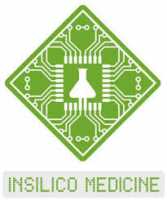14 Dec How Do Stem Cells Respond To Diagnostic Radiation Studies?
MedicalResearch.com Interview with:
 Andreyan Osipov PhD
Andreyan Osipov PhD
Insilico Medicine and
Dmitry Klokov PhD
Canadian Nuclear Laboratories, Chalk River, Ontario, Canada
MedicalResearch.com: What is the background for this study? What are the main findings?
Response: Cells and tissues can be damaged when exposed to ionizing radiation. In case of radiotherapy, it is a desirable effect in tumor cells. In case of occupational, medical and accidental exposures, typically to low-dose radiation, this may pose health risk to normal cells and tissues.
In both cases, short-term assays that quantify damage to DNA and help evaluate long-term outcome are key to treatment/risk management. One such short-term assay is based on quantification of a modified histone protein called gH2AX in exposed cells up to 24 hrs after exposure. This protein marks sites in DNA that have both strands of the DNA helix broken or damaged. This assay is also widely used for various applications, including determination of individual radiosensitivity, tumor response to radiotherapy and biological dosimetry. With the advent of regenerative medicine that is based on stem cell transplantation, the medical and research communities realized that there is a need to understand how stem cells respond to low-dose diagnostic radiation exposures, such as CT scans. Stem cell therapies may have to be combined with diagnostic imaging in recipient patients. The gH2AX assay comes in very handy here, or at least it seemed this way.
We exposed mesenchymal stem cells isolated from human patients to low or intermediate doses of X-rays (80 and 1000 mGy) and followed formation of gH2AX in their nuclei. First we found that residual gH2AX signal in cells exposed to a low dose was higher than in control non-irradiated cells. If the conventional assumptions about this assay that it is a surrogate for long-term detrimental effects was followed it would mean that the low-dose exposed cells were at a high risk of losing their functional properties. So we continued growing these cells for several weeks and assayed gH2AX levels, ability to proliferate and the level of cellular aging. Surprisingly, we found that low-dose irradiated cells did not differ from non-irradiated cells in any of the measured functional end-points. This was in contrast to 1000 mGy irradiated cells that did much worse at those long-term end points.
MedicalResearch.com: What should clinicians and patients take away from your report?
Response: Implications of our study are two-fold.
First, short-term assays may not be as accurate in predicting long-term systemic outcomes as previously thought. In particular, this does seems to be the case for mesenchymal stem cells used in our study, which may in turn indicate that these cells respond to stressors that cause low levels of DNA damage very differently compared to differentiated cells.
Second, in the long-lasting heated debate about linear-no-threshold vs. threshold hypothesis in the area of radiation protection, our results speak in favor of the former and will eventually help establishing evidence-based radioprotection standards in regenerative medicine
MedicalResearch.com: What recommendations do you have for future research as a result of this study?
Response: One of the priorities should be identifying mechanisms of the observed responses of mesenchymal stem cells to low-dose radiation exposures. Here, an interesting possibility of a balance/ratio between error-free and error-prone pathways of DNA double-strand break repair upon irradiation arises. Expansion of stem cells for therapeutic purposes may lead to accumulation of mutations. Would low-dose radiation accelerate this undesirable process? Would other stem cell types respond similarly to diagnostic radiation doses? These are other interesting questions that need to be addressed in a follow up studies.
MedicalResearch.com: Is there anything else you would like to add?
Response: In 2015, the number of publications on mesenchymal stem cells surpassed the publications on hematopoietic stem cells, for the first time in history. Several hundreds of clinical trials using mesenchymal stem cells are underway in various parts of the world. These cells are being explored for a wide range of diseases, such as cardiovascular, autoimmune and cancer diseases. There is a pressing need to characterise mesenchymal stem cells responses to low-dose diagnostic medical irradiations. Our research addresses that need.
See disclosures in the paper.
MedicalResearch.com: Thank you for your contribution to the MedicalResearch.com community.
Citation:
Aging (Albany NY). 2017 Nov 21;9(11):2397-2410. doi: 10.18632/aging.101327.
Residual γH2AX foci induced by low dose x-ray radiation in bone marrow mesenchymal stem cells do not cause accelerated senescence in the progeny of irradiated cells.
Pustovalova M1,2, Astrelina ТA1, Grekhova A1,2,3, Vorobyeva N1,2, Tsvetkova A1,4, Blokhina T1,2, Nikitina V1, Suchkova Y1, Usupzhanova D1, Brunchukov V1, Kobzeva I1, Karaseva Т1, Ozerov IV1,5, Samoylov A1, Bushmanov A1, Leonov S4,6, Izumchenko E7, Zhavoronkov A5, Klokov D8,9, Osipov AN1,2,4,
https://www.ncbi.nlm.nih.gov/pubmed/29165316
Note: Content is Not intended as medical advice. Please consult your health care provider regarding your specific medical condition and questions.
[wysija_form id=”1″]
Last Updated on December 14, 2017 by Marie Benz MD FAAD
